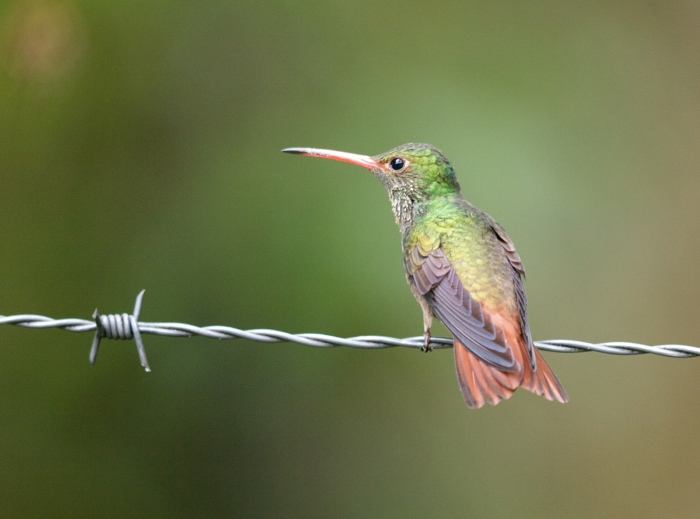Return of Bird of the Week: Rufous-tailed Hummingbird

Rufous-tailed Hummingbird, West Slope of the Andes, Ecuador
The Rufous-tailed Hummingbird is one of the most common hummingbirds in southern Mexico, Central America, northern Columbia and western Ecuador. It’s medium-sized, as hummingbirds go, and packs about as much belligerence into its 5.4 grams as any bird on the planet.

Juvenile Rufous-tailed Hummingbird, West Slope of the Andes, Ecuador
The reddish tail give the species its name, but it is a member of the genus Amazilia, composed of mostly similar-looking birds. The red tail is brighter and the chest uniformly glittering green, separating it from its congeners. There are five subspecies; this is the subspecies jucunda.

Rufous-tailed Hummingbird Nest, Ecuador
Rufous-taileds usually lay two eggs. If you look closely at the photo, you can see the two hatchlings in this nest. (The photo was taken with a 500mm lens, from a distance of almost 15 feet, to minimize disturbance of the nest.)
All the work – building the nest, incubation, feeding the kids – is done by the female. The male, based on WC’s observations, is much too busy chasing other hummingbirds away from feeders and flower patches to bother with raising his kids.
Rufous-taileds’ wide distribution, ready adaptation to feeders and preference for forest margins gets them a “least concern” rating with the IUCN.
For more bird photographs, please visit Frozen Feather Images.